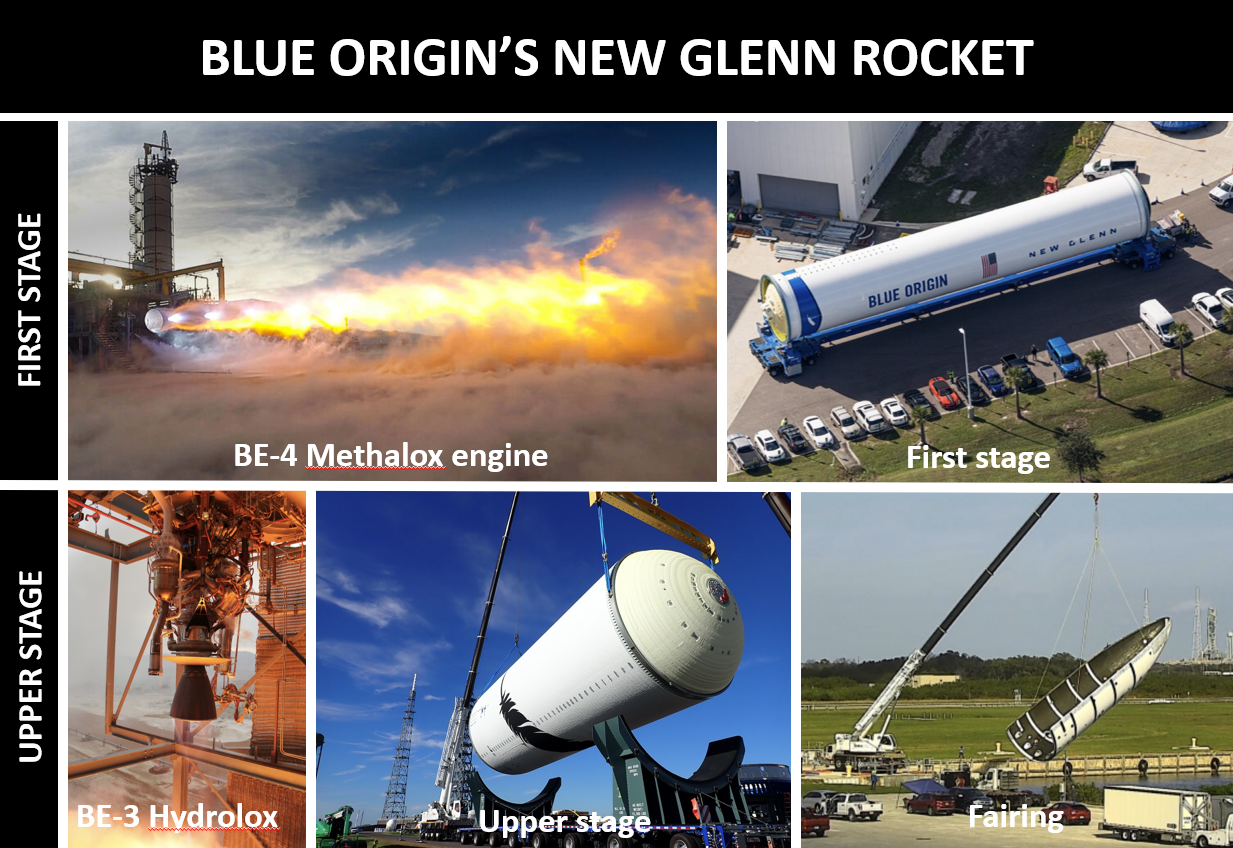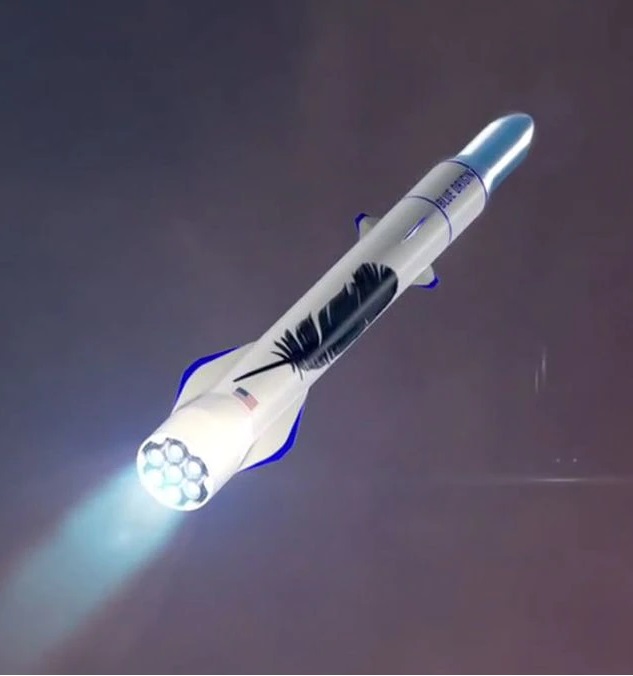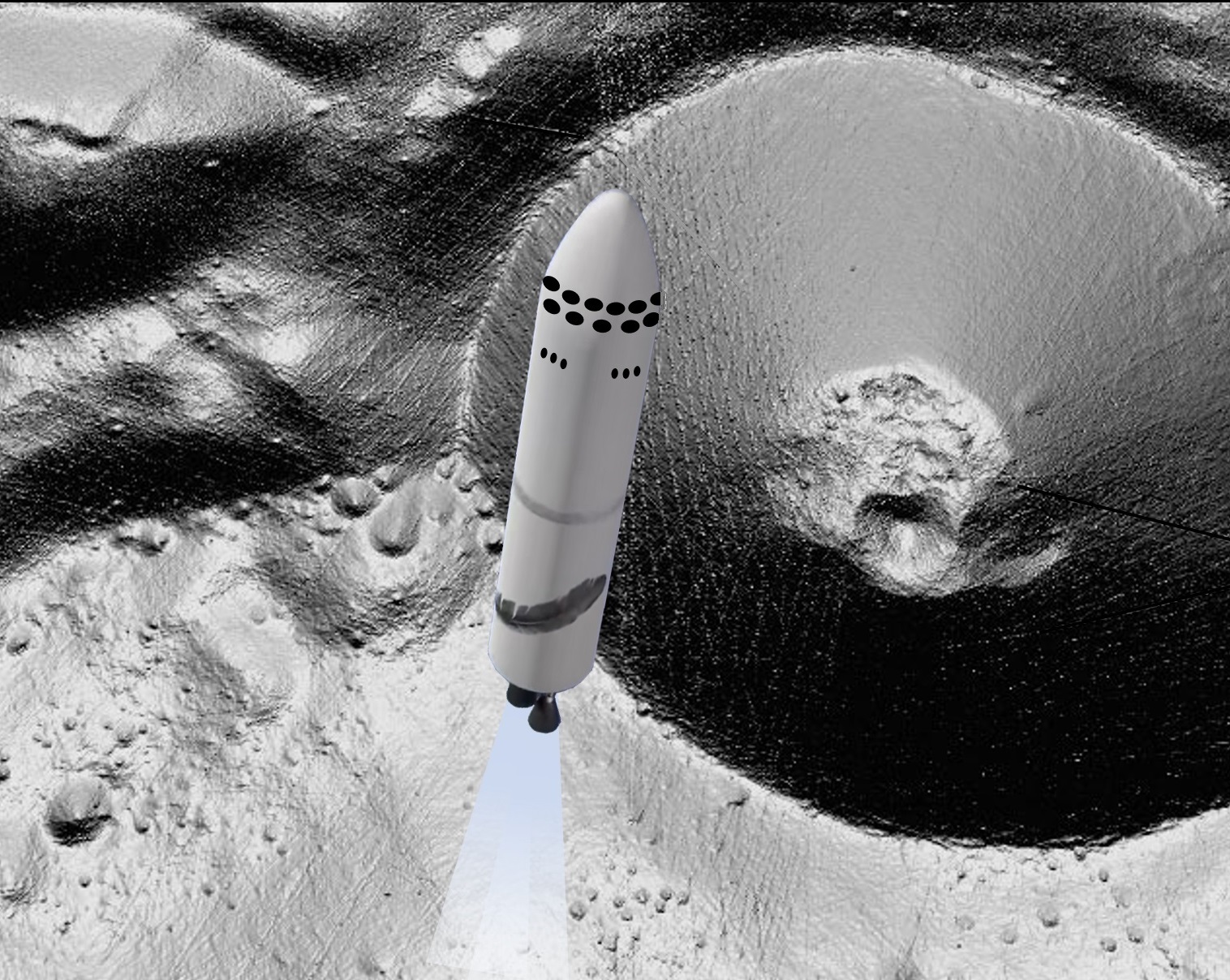
| 
|  |
WORKING TOGETHER TO ADVANCE SPACE DEVELOPMENT
THE NEW EAGLE LANDER

![]() Fortunately, there is a company developing the hardware that could take advantage of this resource. Jeff Bezos' Blue Origin has the Moon squarely in its sights. For this reason, it is developing its BE-3, 4, and 7 engines both of which use hydrolox propellant. We propose a large lunar lander using this technology which could be called, "New Eagle".
Fortunately, there is a company developing the hardware that could take advantage of this resource. Jeff Bezos' Blue Origin has the Moon squarely in its sights. For this reason, it is developing its BE-3, 4, and 7 engines both of which use hydrolox propellant. We propose a large lunar lander using this technology which could be called, "New Eagle".
A lunar-derived transport system could make round trips to the Moon about every 11 days whereas the Earth-Moon departure window opens up only every 26 months. This means that any given vehicle or fleet of vehicles, could make 70! trips to the Moon for every trip to Mars. For this reasons, Blue Origin could easily take the lead in off-Earth settlement if it were to develop a transport system that could ferry dozens of passengers per launch to the Moon using lunar-derived propellant. Here's how.

![]() Blue Origin's near-term, orbital-class rocket is called the New Glenn. It is planned to take 45 metric tons (tonnes) to low Earth orbit (LEO) compared to Starship's 100 metric tons. The plan for Starship is to fully refuel it in LEO allowing it to send the full 100 tonnes to the lunar or Martian surfaces. Likewise, if New Glenn could also fully refuel its craft going to the Moon then it too could send its full 45 tonnes to the lunar surface. When it comes to sending passengers, Starship will be able to send 100 passengers for the approximately six months to Mars. But because the trip to the Moon takes only three days (requiring less space & provisions), Blue Origin's system could also transport about the same number of passengers per launch.
Blue Origin's near-term, orbital-class rocket is called the New Glenn. It is planned to take 45 metric tons (tonnes) to low Earth orbit (LEO) compared to Starship's 100 metric tons. The plan for Starship is to fully refuel it in LEO allowing it to send the full 100 tonnes to the lunar or Martian surfaces. Likewise, if New Glenn could also fully refuel its craft going to the Moon then it too could send its full 45 tonnes to the lunar surface. When it comes to sending passengers, Starship will be able to send 100 passengers for the approximately six months to Mars. But because the trip to the Moon takes only three days (requiring less space & provisions), Blue Origin's system could also transport about the same number of passengers per launch.
What could Blue Origin's lunar transport system look like?
It would not be necessary for Blue Origin to develop a launcher larger than the New Glenn (i.e. the New Armstrong). But it would be entirely necessary for Blue Origin's Earth-Moon vehicle to be refuellable in LEO. However, we believe that LEO refueling is entirely doable. There are options for the degree of reusability of the New Glenn upper stage. Likewise, the Earth-Moon vehicle could either be the New Glenn upper stage (like how Starship is the upper stage of the Super Heavy - Starship) or the upper stage engines could be separated, re-entered, and captured mid-air for reuse while the fairly cheap upper stage tankage could be either discarded or transported to the Moon as payload for its metals.
To maximize efficiency, the cislunar transportation system should be broken up into legs to take advantage of staging between vehicles. Cargo and crew modules could be handed between vehicles in order to reduce the number of propellant transfers that would be needed.

![]()
The first phase would be the New Glenn launching to LEO. New Glenn upper stages would transfer propellant to the Cislunar Vehicle. That vehicle would cycle depart LEO to about EML1, transfer its cargo or crew modules to the Lunar Ferry. The Cislunar Vehicle would then execute an 0.7 km/sec burn to send in back to Earth intercepting the Earth's atmosphere. A heat shield on the Cislunar Vehicle would allow it to enter into LEO without having to drag along the propellant necessary to do that. Once refueled in LEO, it would again conduct the cislunar circuit.

![]() After handing off the crew or cargo module to the Lunar Ferry, the Lunar Ferry would return to the surface of the Moon where the module would be removed. The Lunar Ferry would then be refueled with lunar-derived propellant and launch (without module) to EML1 to retrieve the next module coming from Earth. The Lunar Ferry would have no heat shield but would have landing legs unless it were to be caught by a tower at its landing pad.
After handing off the crew or cargo module to the Lunar Ferry, the Lunar Ferry would return to the surface of the Moon where the module would be removed. The Lunar Ferry would then be refueled with lunar-derived propellant and launch (without module) to EML1 to retrieve the next module coming from Earth. The Lunar Ferry would have no heat shield but would have landing legs unless it were to be caught by a tower at its landing pad.
Such an Earth-Moon system could deliver about the same number of passengers that the larger Starship could deliver despite being a smaller system. And with the much higher number of round trips possible to the Moon compared to Mars, we can imagine that a lunar base / settlement could be the fastest growing settlement in the solar system.